SPECIAL REPORT: CAPITAL IMPROVEMENTS ACROSS THE COUNTRY
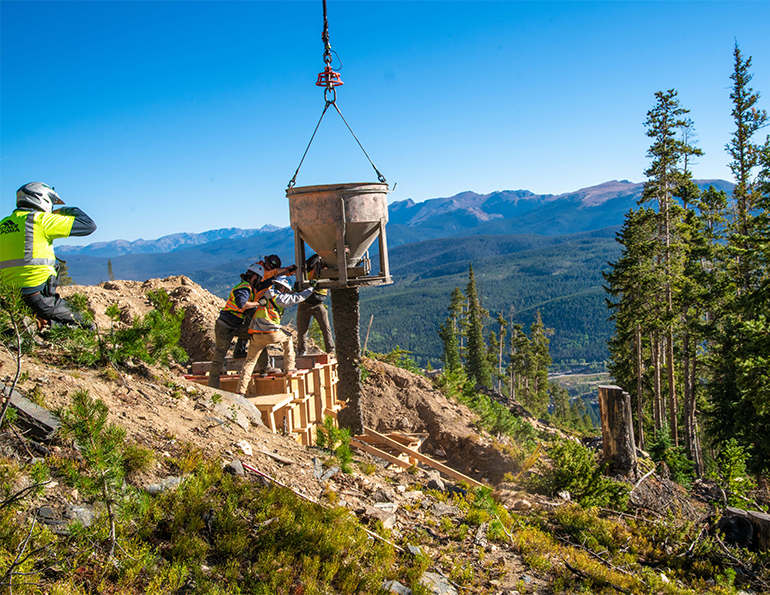
Resorts look to ease congestion and meet increasing demand with capital improvements.Concrete being poured for a lift tower footing for Winter Park’s new gondola.
The snowsports industry has seen a recent influx of cash, and resorts across the country are making massive capital improvements. The money is being spent in a variety of ways—resorts are diversifying their summer offerings, upgrading their facilities, and adding to their infrastructure.
Here, as part of an ongoing series, we look at three resorts that are expanding terrain and upgrading facilities, all to serve and stoke demand for year-round recreation.
HUNTER MOUNTAIN, N.Y.
Hunter is nearing completion of the massive Hunter North expansion, which it claims is the largest expansion project on the East Coast in 15 years. The project opens up an additional 80 acres of skiable terrain, with four new blue-square trails, one green circle, and four gladed trails. In all, it increases the total skiable acreage at the resort by a third.
Peak Resorts acquired Hunter in 2015, and a crew sourced from across Peak’s properties, including Mount Snow and Wildcat, spearheaded the Hunter North expansion. Elia Hamilton, VP of terrain development for Peak Resorts, says the goal of the project was to build more intermediate terrain at Hunter. “We are really trying to keep the character of Hunter, but also create a new experience for people by adding some wide, flowing intermediate trails,” says Hamilton.
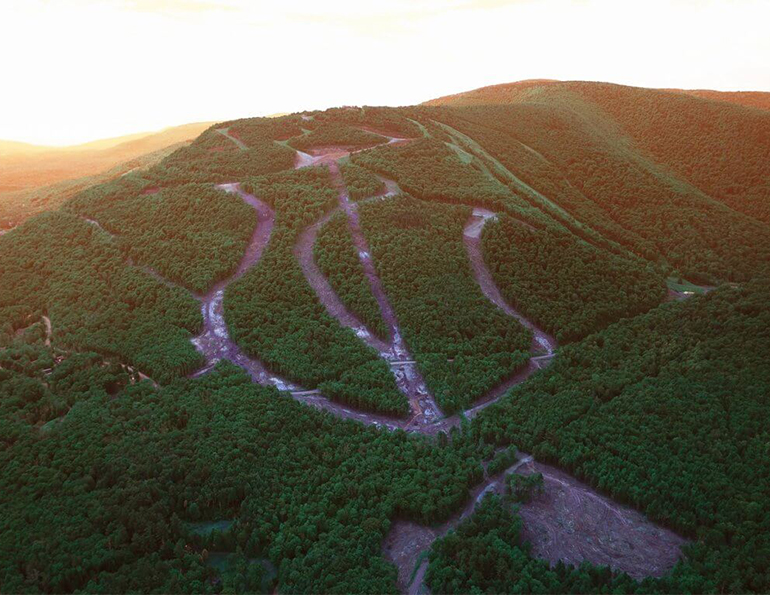
The expansion includes an additional parking lot with space for 250 cars and a new six-person Leitner Poma detachable. The lift will transport skiers and riders from the base to the top of Hunter North in three and half minutes and will have an uphill capacity of 2,400 passengers an hour. The hope is that the entire project will reduce congestion on the mountain and improve the guest experience.
The new trails will have 100 percent snowmaking. The new guns will be supplied by three different manufacturers—SMI, Snow Logic, and HKD—and will be tied into the existing system. “Each vendor brings such a unique and valuable skill set to the product that we will be offering,” says Brendan Ryan, VP of projects for Peak.
Hunter has also made significant upgrades to its electrical infrastructure—bringing in electricity and running fiber and communication lines on the north face—in order to accommodate the large-scale expansion operations.
As with any project of this size, there were obstacles. “The first challenge of creating intermediate terrain on a steep mountain is moving a large amount of mountain material and removing the bedrock,” says Hamilton. “We did a fair amount more blasting then we had originally thought to try and get these trails right.” Adds Ryan, “We did about 50 percent less blasting in areas we had originally identified for that … all together we wound up blasting 33 percent more by neat yardage.”
And while the logging for the project was necessarily outsourced, Hamilton says there were several areas that had to be hand cut, and the team built multiple switchback roads in order to remove trees from steep cliff bands. “In hindsight,” Hamilton says, “I think we could have planned a little bit better for the sheer volume of timber.”
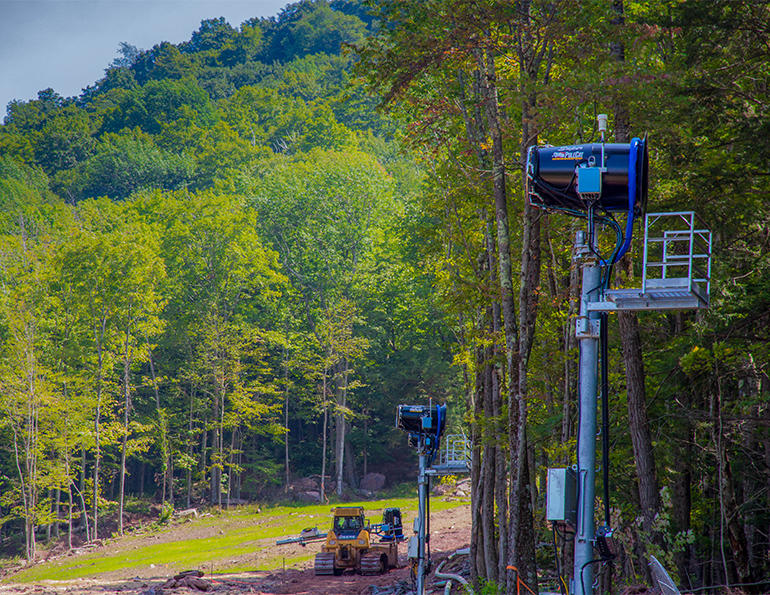
“Like any on-hill project, access is everything,” Ryan says. “The project was a combination of luck/planning in our approach to access. It certainly has underlined how important proper access is for future trail work.”
With all that, the project is on track. The concrete has been poured for the final lift tower, and Hunter North is expected to be operational for the 2018-19 winter season. Hamilton gives a lot of credit to the diverse Peak Resorts team on the ground. “We are self-performing most of the work,” he says. “I think one of the unique things about our company is that we have the ability to draw talented people from the various ski areas we own.”
WINTER PARK, COLO.
Winter Park Resort, which is owned by the City and County of Denver but operated by Alterra Mountain Co., is making nearly $30 million in capital improvements this year. The most significant investment is a $16 million Leitner-Poma gondola, which will take guests from the base of Winter Park up to the lodge at Sunspot, and replaces the resort’s Zephyr Express quad.
The 10-person gondola is the first new lift constructed at Winter Park since 2007 and is expected to increase uphill capacity from Zephyr’s 2,600 up to 3,600 passengers per hour. “It will get people to the top in about 5 minutes,” says Steve Hurlbert, director of PR and communications for the resort. He anticipates that the gondola “will increase circulation around the base area and get people on to the mountain much more efficiently.”
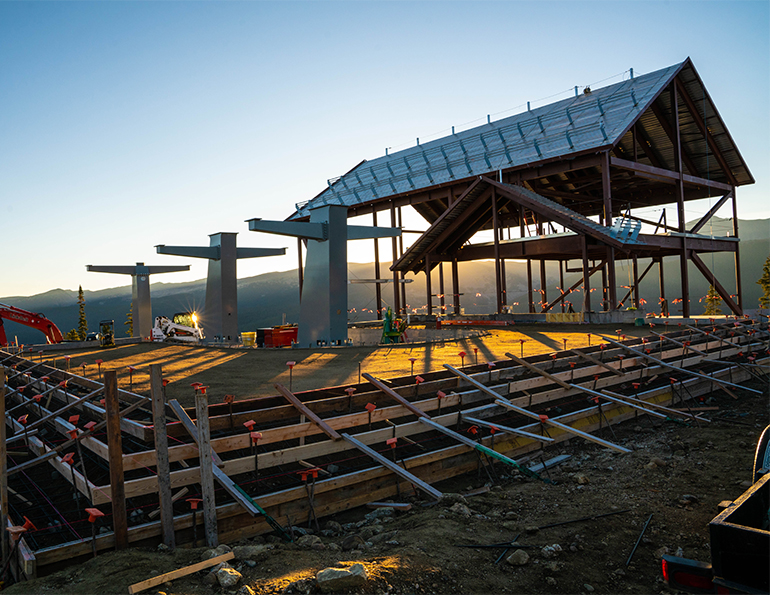
Notably, the gondola features a direct drive system; the first of its kind in North America. “From an environmental standpoint,” says Hurlbert, “it is not going to be a loud clunky gondola. It will be much quieter and more energy efficient.”
The foundations have already been poured for the new mountaintop gondola terminal and the redesigned village plaza at the base. The new village plaza will feature a Pavestone in-ground snowmelt system, ski-lift chair swings, and a permanent stage.
Hurlbert says the $2 million plaza redesign “is going to make it much easier to get to the gondola. We are not going to have the bottlenecks that we had before.” Winter Park anticipates that the plaza will be finished in early November, and the gondola will be open for mid-December.
Winter Park is also investing around $4 million in upgrades to its 42-year-old snowmaking system. “It’s the first step in an overhaul that is really vital,” says Hurlbert. Winter Park has replaced around 45,000 linear feet of pipe, installed two high-efficiency compressors, and added 30 new snow guns. The resort is also adding two new PistonBully snowcats to the grooming fleet.
The upgrades to the snowmaking system are expected to triple the amount of snow the resort can make, under the right conditions, and should be ready for use this fall. Hurlbert says, “That is going to help us early season to get more terrain open quicker and also provide a great foundation for the entire season.”
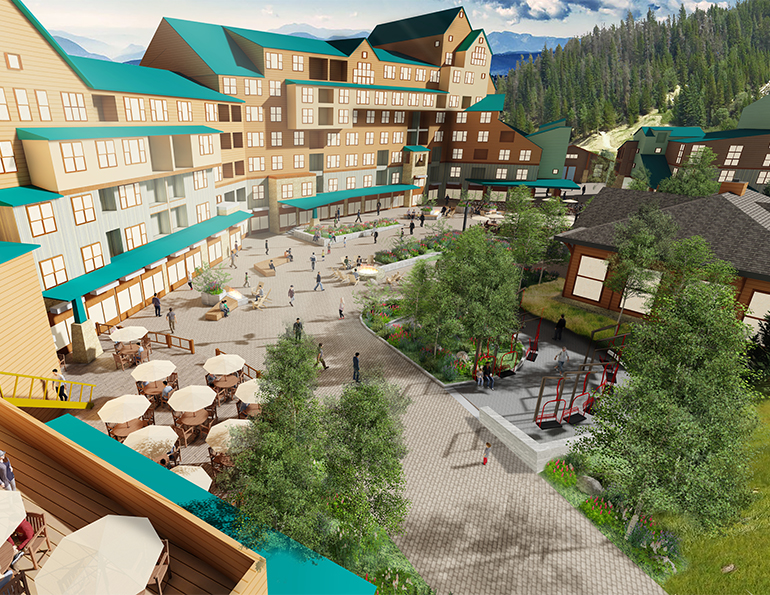
.
Meanwhile, the resort has also opened up 21 acres of the Eagle Wind territory for logging. The resort worked closely with the USFS to clear out dead timber following the pine beetle blight several years ago to improve both the tree skiing in the popular area and the vitality of the forest.
Hurlbert notes that this “is the most that has ever been invested in Winter Park at a single time.” He sees the capital improvements the resort is undertaking as part of Winter Park’s continuing evolution into a four-season resort. The gondola, he adds, “is going to expand opportunities that we haven’t even really thought of for the future.”
LEE CANYON, NEV.
Just outside of Las Vegas, Lee Canyon has been working on a development project for nearly a decade. The Forest Service accepted Lee Canyon’s master development proposal back in 2011, but since then, the project has undergone several revisions.
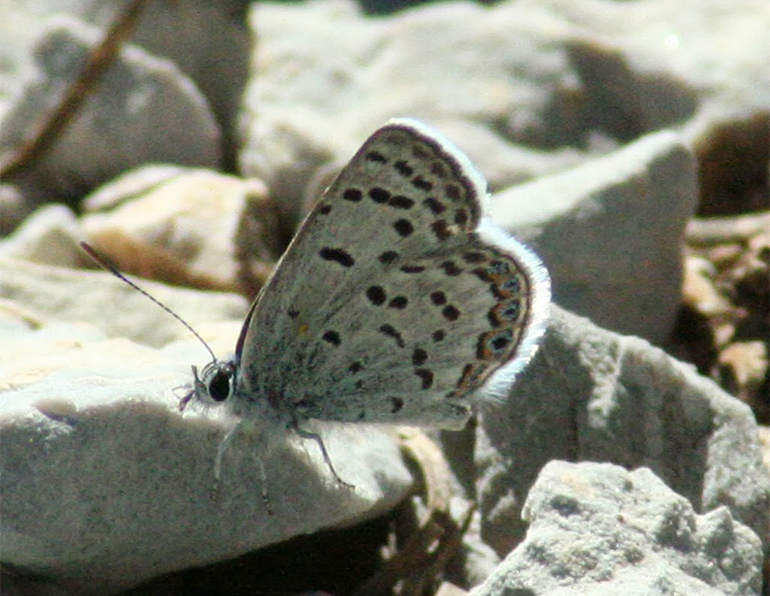
The Mount Charleston blue butterfly, which makes its home in the Spring Mountains, was placed on the endangered species list after the proposal was accepted. And nearly all of Lee Canyon is critical butterfly habitat, which could have spelled the end of the development project.
But both the USFS and Lee Canyon’s general manager, Dan Hooper, see the development as an opportunity to improve the Mount Charleston blue butterfly’s habitat. Hooper says that it was “a big focus for us to look at how our proposal could evolve to take in feedback from Fish and Wildlife” in regards to simultaneously improving the butterfly habitat and expanding the resort’s terrain.
While the proposal is still under consideration, Hooper is hopeful that the resort will gain approval for the development by the end of May 2019. Lee Canyon has plans for $15 million to $20 million in capital improvements over the next five to 10 years.
The first item on the agenda is increased parking capacity. Hooper notes that there is a growing demand for outdoor recreation opportunities in the Las Vegas area. “In the last 10 years there has been a significant population increase in Las Vegas, and we have also seen increased visitation in the Spring Mountains.”
Once it has tackled parking, Lee Canyon plans to increase snowmaking capacity, install two new chairlifts, expand gladed and on-piste skiing and riding terrain, and add 12 miles of mountain bike trails.
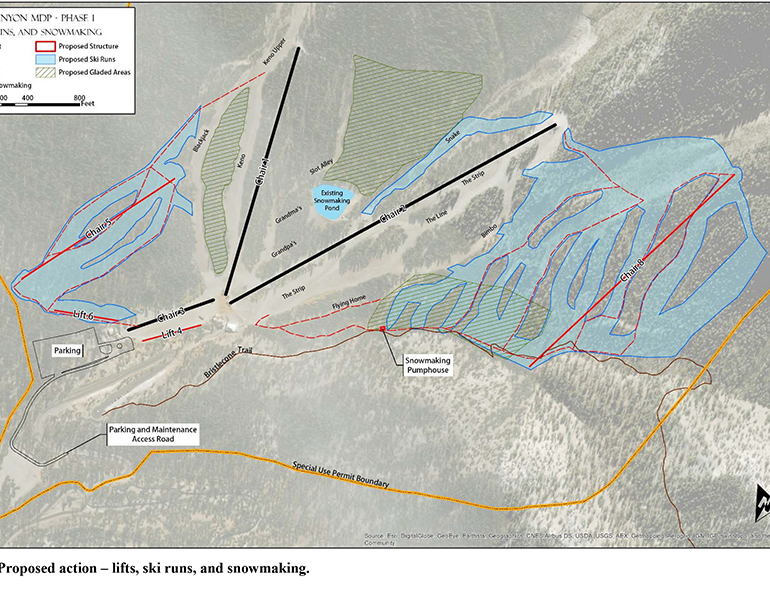
“The mountain biking that is proposed is really exciting for us,” says Hooper. Las Vegas has a steadily growing mountain bike scene, and sweltering desert heat makes the significantly cooler mountain environment of Lee Canyon an ideal mountain bike destination. Hooper is excited to continue working with Gravity Logic on the bike park once approval has been granted.
The resort has also gained separate approval from the USFS to begin construction on a new base building in summer 2019. It will be the first new building at Lee Canyon since the early 1970s. It will have approximately 8,000 square feet of indoor space and 12,000 square feet of outdoor deck space. The lodge will include two new food and beverage outlets and additional bathrooms, which is a cause for internal celebration because, Hooper notes, “we don’t have remotely enough bathrooms currently here.”
Of the development proposal, Hooper says, “Really, the motivation is to turn Lee Canyon into a year round playground for Las Vegas.” But Hooper also hopes that Lee Canyon’s development odyssey will be a success story about working with Fish and Wildlife and the USFS to increase recreation opportunities and increase habitat for an endangered species.
Powdr Corp., who owns Lee Canyon, ascribes to the eco-conscious motto “play forever.” And Hooper says that Lee Canyon has worked closely with the Forest Service and Fish and Wildlife to make the development project environmentally conscientious. For example, the Mount Charleston blue butterfly prefers a habitat with an open canopy, so, Hooper says, “some of the proposed gladed areas are specifically meant to link pieces of suitable habitat together.”
Hooper says that it was critical to get Fish and Wildlife and the USFS on board with the project early, and that it “has been important for us to take their feedback and take the public feedback and be willing to amend what we are doing.”
While the only firm date for development is the new lodge next summer, if approval comes through next May as anticipated, Hooper says, “There is the potential that we might see that start of some other projects that summer as well.”
Posted from SAM



